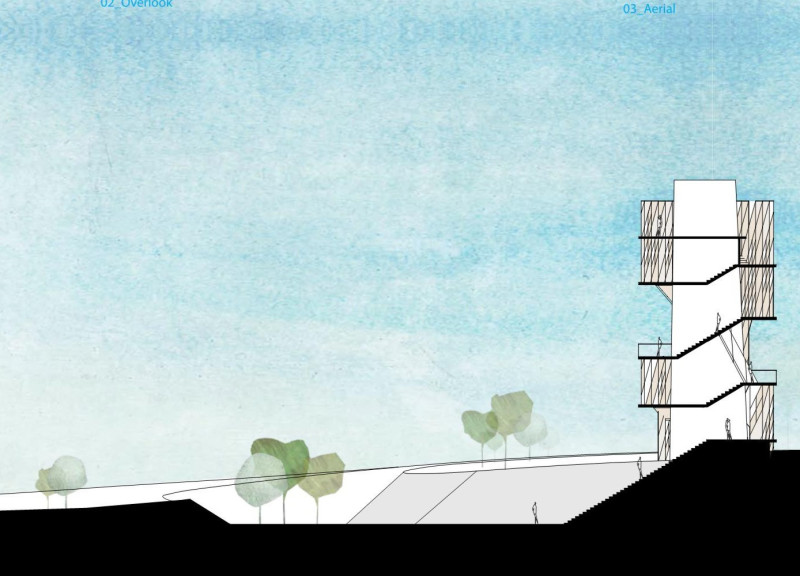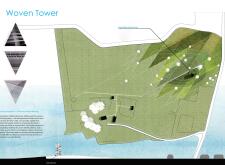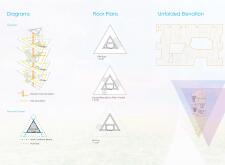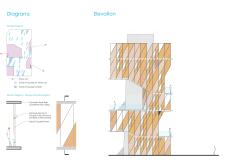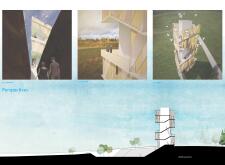5 key facts about this project
The Woven Tower stands in the beautiful landscapes of Latvia, showcasing the country's rich cultural heritage and its connections to textile craftsmanship. Serving as both an observation point for visitors and a habitat for local birds, the design reflects the art of weaving. It captures the essence of this traditional process and translates it into a modern form that invites exploration and interaction.
Structural Framework
The core of the Woven Tower is the key to its stability and strength. This central part supports the diverse façade, which is inspired by traditional Latvian textile patterns. The façade design incorporates triangular shapes that vary in opacity, creating a visually interesting surface that reacts to natural light throughout the day. The interplay of light and shadows adds depth to the structure.
User Experience
Visitor experience is an important focus of the design. Multiple viewing platforms are integrated into the tower, allowing different perspectives as one ascends. Each level presents new opportunities to appreciate the surrounding landscape. The openings in the façade frame views and offer nesting spaces for birds, blending ecological elements with the structured environment.
Materials and Detailing
Concrete is used for the core and floor slab, providing the necessary durability for the tall structure. Exposed aluminum serves as an important aspect of the façade's design, contrasting with the traditional patterns. This choice of materials fosters a connection between contemporary architecture and historical references, strengthening the project's cultural narrative.
The façade's triangular patterns create a rich visual texture, casting shifting shadows that change with the time of day. As visitors move through the tower, the relationship between light and structure emphasizes a connection with nature. This careful design blurs the boundaries between the man-made structure and the organic environment, enriching the overall experience.


